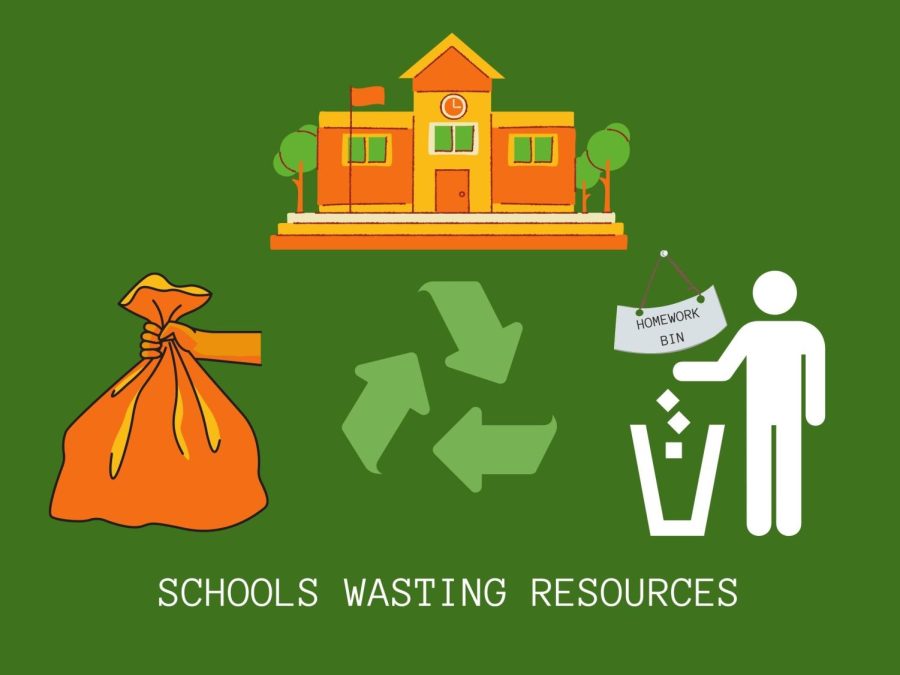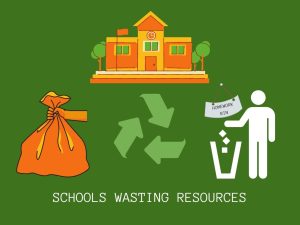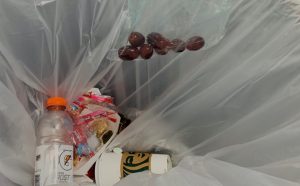Use, do not abuse
While the cost of recycling may seem more expensive in the long run, it truly benefits the planet in multiple ways and also helps citizens. “Recycling is the easiest thing to do. Sometimes you don’t even have to pay to recycle. You can keep a bin for recycling and once a week, you can go to your local recycling center and recycle all of the materials there,” freshman David Achamaja said.
April 20, 2022
The prevention of waste in schools everywhere could increase with the right motivation. School waste remains unnoticed as a problem in multiple states and also stays important to recognize, for the benefit of the environment and community. Administrators and school officials should learn how to manage and use their resources when considering the type of resources they use.
Unfortunately, with food waste in schools, encouraging students not to waste stands as most schools’ main option to help with the waste problem. One in 20 students in high schools does not eat school lunches for various reasons. School county websites, that serve lunch, mention their school menu food and nutrition facts for all to see what they might put into their bodies.
Maintaining nutritional benefits and “healthy” food options in schools remains controversial after Michelle Obama‘s nutrition change suggestions for all schools in the US. Cafeterias in the US, before college and universities, still do not live up to the healthy food standards. Students constantly report eating expired or uncooked food served at lunch. Frozen food may result in these types of lunches. Most do not expect a cafeteria staff to cook the lunches served completely from scratch, as that would take too much time and probably cost more money.
“I see a lot of my teachers wasting resources every day. I have one teacher who prints out five pages of a test and then throws them away since we use scantrons. There’s also a ton of waste during lunch. I’ll see kids get lunch and then throw it away when lunch ends without even touching it,” freshman Jack Mackain said.
Schools and Universities waste 562, 442 tons of paper, cardboard and school food in a year. Preventing paper waste in schools creates a simple solution. Recycling helps with the waste problem in the world, and also benefits the planet. 85% of paper comes from the wood pulp of softwood and hardwood trees. Not only does cutting down trees for paper affect the oxygen in the area, it also affects the overall health of the planet.
“The solution is simple, people just take a while to actually try to see it. I get that sometimes money is a problem for schools, but it should not be if they’re wasting a bunch of their resources. There’s nothing students can really do about it though so all we can do is sit back and watch valuable resources go to waste,” freshman Addison Hill said.
Schools can offer multiple resourceful options for the rid of waste in their environment. One of the main options schools can use to reduce waste is the use of less paper. The internet constantly proves to help schools. Computers and laptops for a school cost less than spending massive amounts of money on textbooks each year, which also helps the school’s budget since they last longer.
Several people do not see this waste as a problem, but instead as an inconvenience. Schools that do not recycle may not because of financial problems. Yet, when schools complain about their money or budget problems, they still waste their money on other things that selfishly benefit their school’s name. Abolishing the problem of waste in the country progresses as easy to contribute to and eliminate, for the benefit of the planet.









